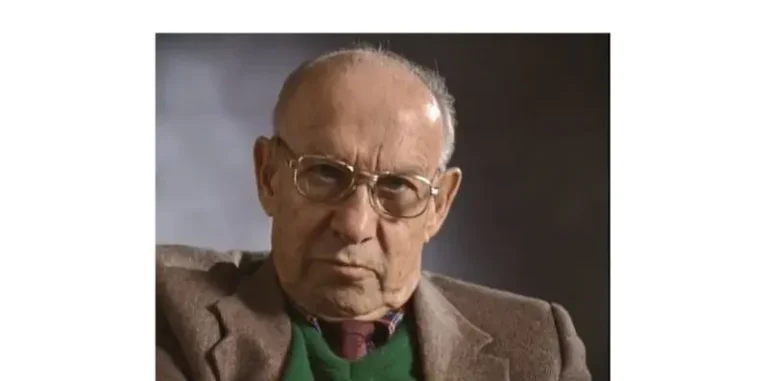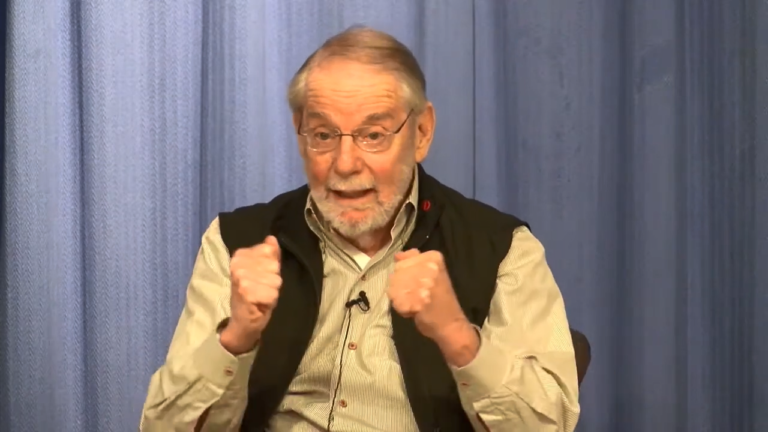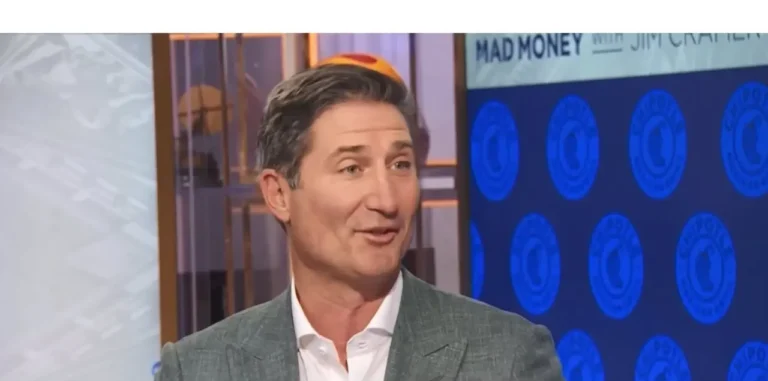Should You Use Bullet-Point Story Summaries? And How?
Communicators, think twice before copying journalism’s latest trend
The filmmaker Samuel Fuller influenced a wide range of directors, from Jean-Luc Godard to Quentin Tarantino, even though he made many quick-turnaround, low-budget films in the 1950s and ’60s.
Fuller, who died in 1997, made more than two dozen movies, about crime, westerns and war. A favorite of French movie critics, his career hit a lull in the ‘70s. Fuller’s best-known film, “The Big Red One,” based on his army service during World War II, was released in 1980.
Fuller’s trademark was an attention-getting opening scene, an approach drawn from his early experience as a crime reporter.
“He’s got to tell the story and he’s got to tell it fast,” Martin Scorsese said in a 1996 documentary. “He’s got to hook you. He has to hook you with the headline, he has to hook you with the prose.”
It’s a lesson that news outlets and internal communications teams should remember as they experiment with AI-generated bullet-point summaries atop their stories.
The summaries are intended to be a convenience to busy readers while also sparking interest in reading the story. Too often, the summaries serve neither purpose, instead repeating the headline or the first sentence. Although trendy, we think they should be used sparingly, if at all. And we have a tip on how to use them.
We’ll take a close look at three examples, but first a little background about the storytelling technique.
What’s the point?
Last year, news outlets began using the bullet-point summaries. USA Today, which may have been the first, calls them “Key Points;” Bloomberg, “Takeaways;” and Yahoo! News offers a combo, “Key Takeaways.”
The Wall Street Journal called them “Key Points” until a recent format change. Now, it’s a “Quick Summary.”
The summaries are typically placed below the headline and photo, if any, and above the copy. The news organizations use artificial intelligence apps to write them, adding a note on AI’s role. Editors review the summaries before publication.
Internal communications teams are joining the trend. Their counterparts in public relations have long topped press releases with bullet points.
The trend is an offshoot of the Axios HQ Smart Brevity writing style, which takes a good idea and goes overboard.
On repeat?
Winning readers’ attention is the goal not only for headlines, but also the inverted pyramid, the historic story structure still widely used today. With the pyramid, stories start with the newsiest, most important information.
Yet the new summaries often repeat the headline, photo caption or first sentence, called a “lede” in many newsrooms. Consider this example:
They returned used toilets and dirty rugs to Costco. Then came the backlash.
Shoppers pushing the limits of Costco’s famously lenient “risk-free 100% satisfaction” return policy by getting full refunds for sagging sofas and stained mattresses are dividing the internet.
Jessica Guynn and Bailey Schulz
USA Today
July 23, 2025
Key Points
· Costco’s generous return policy, while popular with shoppers, has sparked controversy over potential abuse.
· Some shoppers have returned used or damaged items, leading to spirited online debates about return ethics.
The summary repeats the headline, although not as cleverly. And it delays the start of the story, which is an anecdote about a Dallas Costco member shopper who returned a stained, $150 rug.
Here’s another example in which the news is repeated.
Munich Re CEO Wenning to Retire, CFO Moves Up
Joachim Wenning will step down after eight years in the role, to be succeeded by Christoph Jurecka
By Elena Vardon
Wall Street Journal
July 23, 2025
Caption: Munich Re’s Chief Executive Joachim Wenning will retire at the end of this year.
Quick Summary
· Joachim Wenning, Munich Re’s Chief Executive, will retire at the end of this year for personal reasons.
· Christoph Jurecka, the current finance chief, will succeed Wenning as Chief Executive on January 1.
· Andrew Buchanan, who has been CFO of reinsurance since 2017, will replace Jurecka as finance chief.
Munich Re’s Chief Executive Joachim Wenning will retire at the end of this year and be succeeded by finance chief Christoph Jurecka.
We’ve included the entire “Quick Summary.” The Journal’s recent format change makes the summary bullets less obtrusive, showing only the first bullet and making the reader select “Quick Summary” to see the rest.
The tendency to repeat may be a result of the AI app used to create the summary. The AI might naturally think the headline and first sentence are the most important parts of a story, which they are!
What to sum?
News outlets don’t use the summary bullets on every story. Bloomberg, for example, uses them on longform stories and fast-moving reports.
“We publish thousands of stories every day,” Chris Collins, the chief product officer, told Nieman Lab last month.
That’s a rationale that doesn’t apply to corporate internal and external communications.
Tess Jeffers, the Journal’s director of newsroom data and AI, said the summaries “make the most sense on our core news stories where the facts are clear.”
None of the news outlets seem to be consistent in what they summarize. Jeffers said it’s a story editor’s decision to publish summaries, which may partly explain the variability.
Readers’ response
Evidence on what readers think about the bullet-point summaries is scarce. Kat Downs Mulder, general manager of Yahoo! News, said readers typically rate the summaries as accurate, while Bloomberg’s Collins says reader feedback has been positive.
When the Journal tested its summaries before launch, it focused on two questions, according to Nieman Lab:
“Did the key points impact subscriber engagement with its journalism (volume of articles read per session, length of session, or length of time spent on an article with key points)? And did they impact nonsubscriber conversion rate?”
The Journal didn’t release the results, but we assume the answers were positive because the Journal went ahead with the launch.
We think readers are likely to open a story, read the summary and then move to another story. Perhaps that’s better for revenue than not opening the story at all.
A better way
Summaries should give readers more information, rather than merely repeating the headline, caption and first sentence. This story from Bloomberg does a better job:
Chuck E. Cheese Owner Talks Equity Deal After Failed Junk Bond
Caption: A Chuck E. Cheese’s location in Pinole, California.
By Aaron Weinman and Reshmi Basu
July 15, 2025
Takeaways
· CEC Entertainment is in talks with its equity investors for some $600 million to cover upcoming debt payments, according to people familiar with the matter.
· The company has held discussions with private lenders over refinancing its debt, said the people, and is seeking to refinance a $650 million five-year bond it raised in April 2021.
· CEC’s exposure to an economic slowdown and a possible slump in consumer spending has made it challenging to win over bond investors, said the people.
Chuck E. Cheese owner CEC Entertainment is in talks with its equity investors for some $600 million to cover upcoming debt payments, after the company failed to raise cash in the junk-bond market, according to people familiar with the matter.
Like this story, Bloomberg often treats the summaries as a separate entity, seemingly dropping the pretense of encouraging readers to read on.
Fuller’s career
We think bullet-point summaries should be used sparingly, if at all. Would Fuller have agreed?
In his memoir, “A Third Face,” published after his death, Fuller recalled “The Naked Kiss,” a 1964 movie about a call girl who wants to start a new life.
Before the credits, the movie jumps in as the prostitute batters her pimp in his well-appointed apartment while jazz music plays.
“I wanted to grab the audience like a screaming headline, and quickly establish the character of my lead, Kelly, in the first scene,” he wrote. “Critics have called this sequence my ‘signature’ scene. That’s b—, because every scene in every movie bears my imprint.”
Tom Corfman is a movie fan and a senior consultant with Ragan Consulting Group. Email him to learn more about our Build Better Writers program, which includes group workshops and one-on-one training.
Follow RCG on LinkedIn and subscribe to our weekly newsletter here.







